The Appalachian Mountains in North Carolina are home to various bird species. Birdwatchers and nature enthusiasts flock to the scenic Blue Ridge Parkway, Great Smoky Mountains National Park and the Pisgah National Forest to witness the stunning array of birds in the area.
From the flashy Northern Cardinal to the elusive Swainson’s Warbler, the birds of North Carolina’s mountain region are a mix of year-round residents and seasonal visitors.
The mountainous terrain provides a unique habitat for these animals, allowing them to thrive despite human interference.
This article will explore some of the most common bird species found in the North Carolina Mountains and their unique characteristics.
11 North Carolina Mountain Birds
North Carolina is home to various bird species, and its mountainous region offers a unique habitat for both resident and migratory birds. Here are 11 bird species that you might encounter in the mountains of North Carolina:
1. Mountain Bluebird
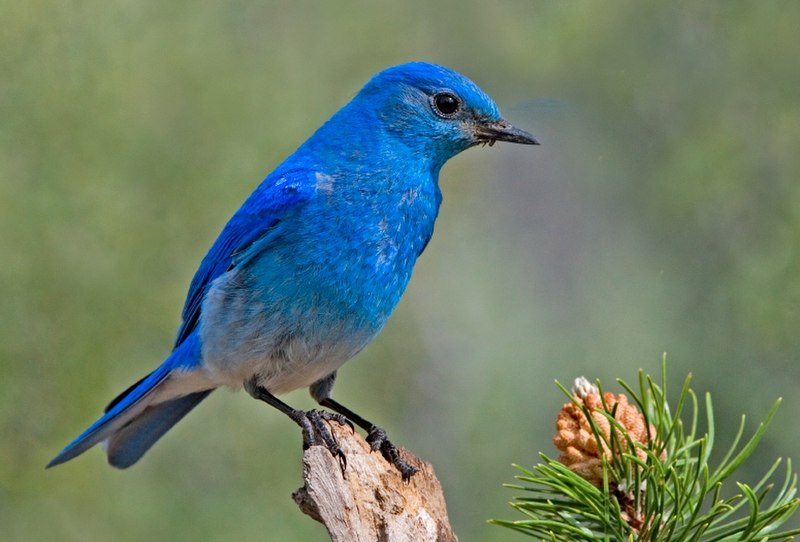
The Mountain Bluebird is a beautiful sight to behold. It has bright turquoise-blue wings and tail, with a light underbelly, grey crown and breast, black eyes and thin bills.
During the fall season, its plumage changes slightly – females have duller blue wings and tails and grey throats and backs.
As they migrate across western North America during springtime, these birds can be found in mountainous districts where they feed on insects such as grasshoppers or crickets collected from meadows or fields of grain.
They also enjoy eating berries when available. Through its stunning colours, this species adds vibrancy to any landscape it traverses – truly an incredible creature of nature.
Scientific classification:
| Kingdom | Animalia |
| Phylum | Chordata |
| Class | Aves |
| Order | Passeriformes |
| Family | Turdidae |
| Genus | Sialia |
| Species | S. currucoides |
Also Featured In: Most Common United States Birds, Birds That Live in Colorado
2. Bald Eagle
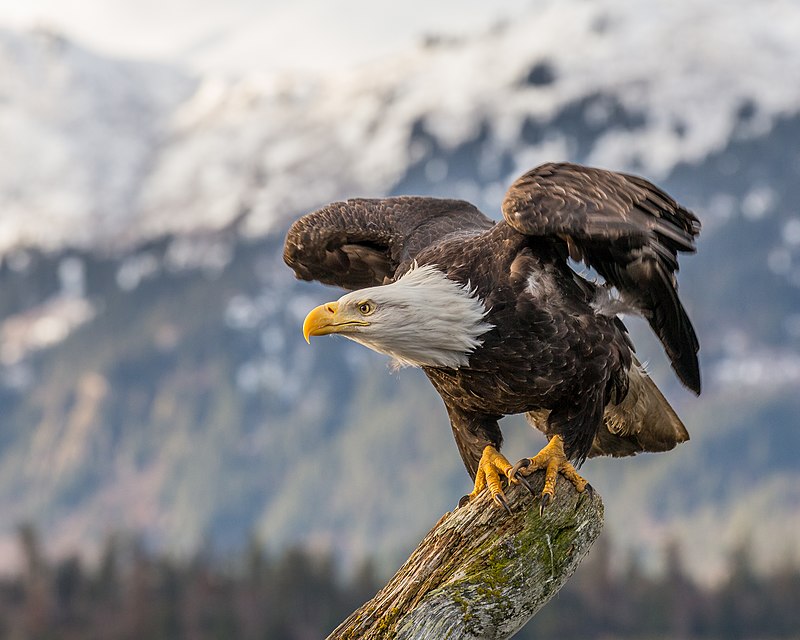
The majestic Bald Eagle is a bird of prey found in North America and recognized as the national symbol of the United States.
With its distinctive white head, brown body and striking yellow beak, this sea eagle has two known subspecies that form a species pair with the White-tailed Eagle.
It inhabits much of Canada, Alaska, all states in the US, contiguous areas, and Northern Mexico near large bodies of water where they feed mainly on fish.
These birds have an impressive wingspan ranging from 1.8 to 2 meters depending on their size, making them one of nature’s most magnificent creatures.
Scientific classification:
| Kingdom | Animalia |
| Phylum | Chordata |
| Class | Aves |
| Order | Accipitriformes |
| Family | Accipitridae |
| Genus | Haliaeetus |
| Species | H. leucocephalus |
Also Featured In: Birds Live in Arkansas, Flight Birds You Should Know
3. New World Warblers
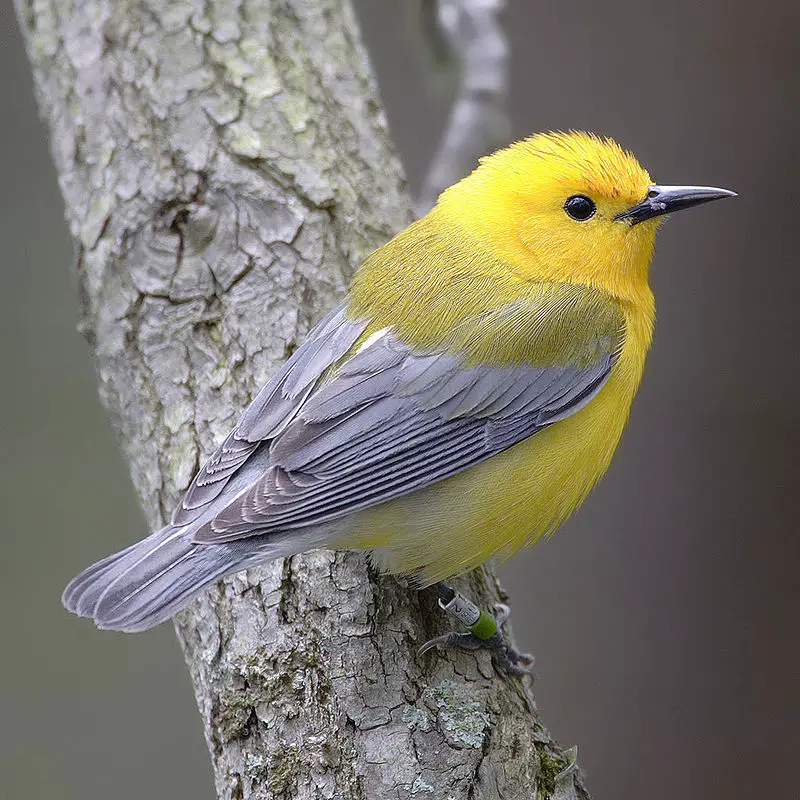
New World warblers are an incredibly diverse family of small birds found only in the Americas. They range in size from tiny hummingbirds to large thrushes and come in various vibrant colours.
All have thin bills made for eating insects, which form their main diet. Most species live predominantly arboreal lives, meaning they spend most of their time among trees or bushes searching for food.
However, some members, such as ovenbirds and waterthrushes, prefer more terrestrial habitats like forest floors where they can scavenge for bugs on the ground instead.
Warblers provide a great source of entertainment with their beautiful songs, often filling up woodlands during mornings and evenings throughout springtime.
Scientific classification:
| Kingdom | Animalia |
| Phylum | Chordata |
| Class | Aves |
| Order | Passeriformes |
| Superfamily | Emberizoidea |
| Family | Parulidae Wetmore et al., 1947 |
Also Featured In: Most Common Songs Birds that Live around You, Common Denmark Birds
4. Tyrant Flycatchers
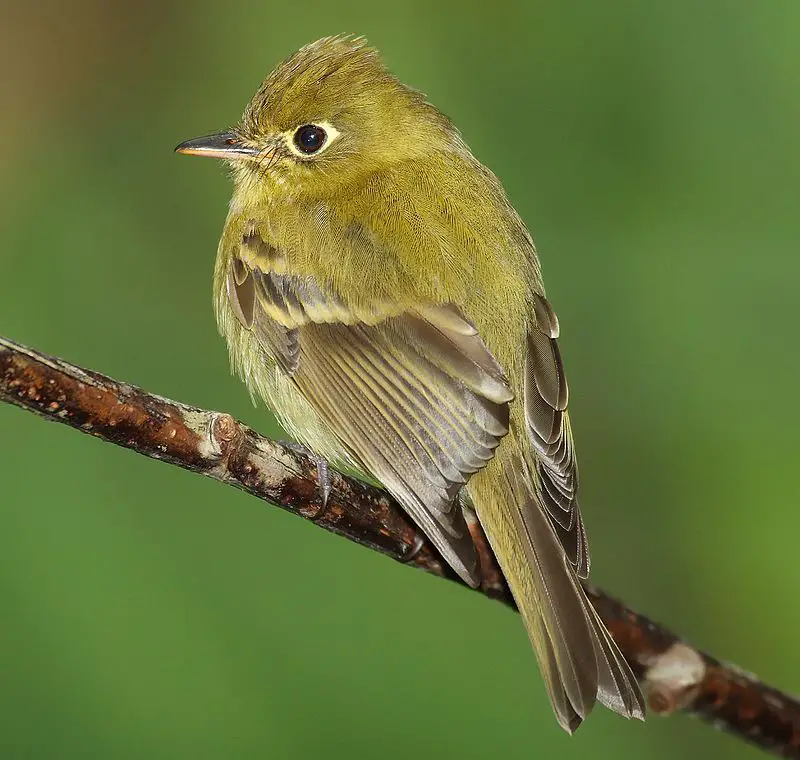
Tyrant flycatchers are a family of birds found in North and South America, containing over 400 species. These birds come in various shapes and sizes, with vibrant plumage to match.
They are the most diverse avian family in all countries except for the United States and Canada.
Their diet consists mainly of insects and includes small reptiles or amphibians where available.
The behaviour varies between birds; some prefer open areas, while others prefer dense forests as their habitat. Many even migrate regularly.
Tyrant Flycatchers have adapted well to human presence thanks to the abundance of food sources often accompanying them, such as backyards, parks, etc.
All things considered, these incredible creatures are truly amazing.
Scientific classification:
| Kingdom | Animalia |
| Phylum | Chordata |
| Class | Aves |
| Order | Passeriformes |
| Parvorder | Tyrannida |
| Family | Tyrannidae Vigors, 1825 |
Also Featured In: Birds of Argentina, Birds that You’ll Find in Puerto Rico
5. Cardinal
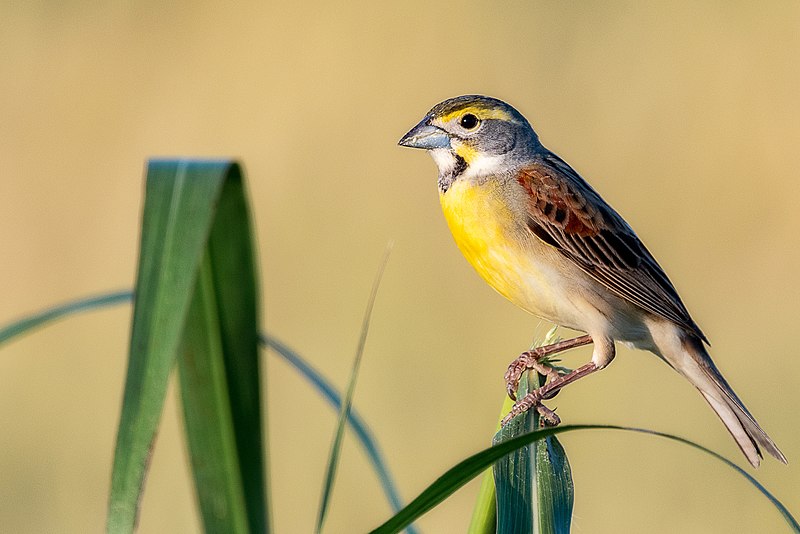
Cardinalidae is a family of passerine birds endemic to the New World, including cardinals, grosbeaks and buntings.
This large group has great diversity in its members, ranging from tanager-like Piranga to warbler-like Granatellus.
They are usually distinguished by their bright plumage, with reds, oranges and yellows being common among them.
Their strong bills enable them to feed on seeds, fruits, insects, and other small prey items like lizards or frogs, depending upon species.
Cardinals also have loud calls often used for territorial defence and courtship purposes, while some can even imitate sounds made by other animals.
These adaptable birds inhabit various habitats across North America, making them an important part of many ecosystems there.
Scientific classification:
| Kingdom | Animalia |
| Phylum | Chordata |
| Class | Aves |
| Order | Passeriformes |
| Superfamily | Emberizoidea |
| Family | Cardinalidae Ridgway, 1901 |
Also Featured In: Common Birds in Canada, Famous Paintings Birds
6. Brown Creeper
The Brown Creeper is a small songbird from the Certhiidae family and native to North America. It has brown upperparts with light spotting that resembles tree bark and white underparts.
Its bill is long and thin with a slight downward curve, while its tail is also long yet stiff; this helps it creep up trees.
This bird feeds mainly on insects, which can be found in crevices of barks or dead plants, thanks to its curved bill, allowing access to these hard-to-reach places.
When searching for food, they move diagonally upwards around trunks so their camouflage blends in perfectly with the background, making them difficult to spot.
Scientific classification:
| Kingdom | Animalia |
| Phylum | Chordata |
| Class | Aves |
| Order | Passeriformes |
| Family | Certhiidae |
| Genus | Certhia |
| Species | C. americana |
Also Featured In: Chickadees Birds, New Hampshire Birds You Should Know
7. Red Crossbill
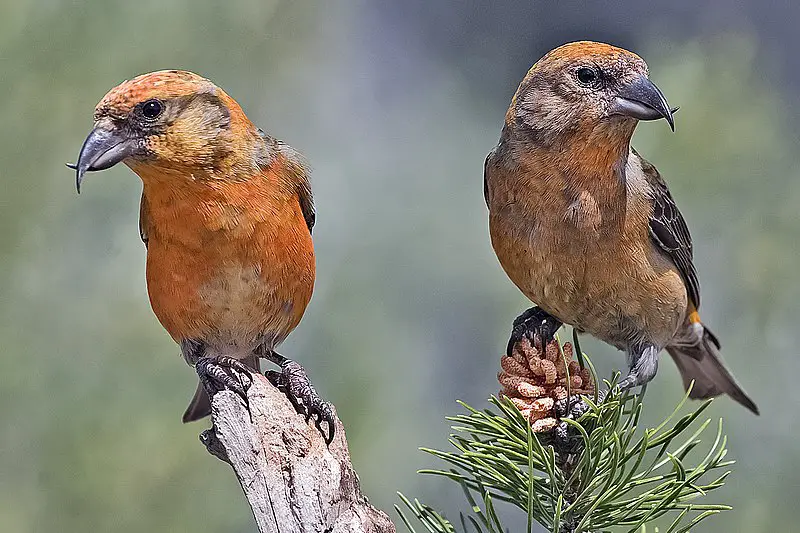
The Red Crossbill is a small passerine bird belonging to the finch family. It has distinctively crossed mandibles, which it uses to extract seeds from conifer cones and other fruits.
This species can be identified by its vivid colouring; males are red or orange in hue, whilst females tend to have more green or yellow feathers.
Furthermore, there is considerable variation between individuals of this species regarding their beaks’ size and shape and their calls, ranging from short trills through chirps and harsh cackles up to loud rattling sounds.
They’re an interesting sight in many parts of Europe, particularly during winter months, where they often feed on pine cone seeds that drop down onto lower branches of trees.
Scientific classification:
| Kingdom | Animalia |
| Phylum | Chordata |
| Class | Aves |
| Order | Passeriformes |
| Family | Fringillidae |
| Subfamily | Carduelinae |
| Genus | Loxia |
| Species | L. curvirostra |
Also Featured In: Finches Species, Common Birds in Saskatchewan
8. Pine Siskin
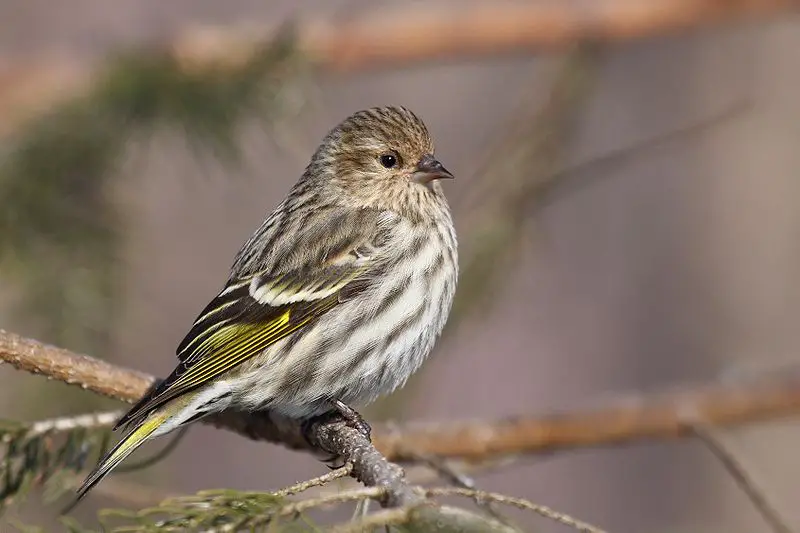
The Pine Siskin is a small bird from the finch family, primarily found in North America. It has an irregular migratory range and was first described by American ornithologist Alexander Wilson in 1810.
Due to its frequent presence near coniferous trees, the species gets its name pinus, which means “pine tree” in Latin.
Pine siskins are known for their yellow wing bars, streaked chests, and perky mannerisms when perched on branches or flying around looking for food during colder months.
They feed mostly on seeds of weeds, grasses and other plants but can also be seen consuming insects at times during the summertime nesting season.
Its loud calls often alert nearby birds of potential danger while they nest high up among pine tree limbs where predators cannot reach them easily.
Scientific classification:
| Kingdom | Animalia |
| Phylum | Chordata |
| Class | Aves |
| Order | Passeriformes |
| Family | Fringillidae |
| Subfamily | Carduelinae |
| Genus | Spinus |
| Species | S. pinus |
Also Featured In: Most Common Winter Birds, Autumn Birds You Should Know
9. Swainson’s Thrush
Swainson’s thrush is a medium-sized bird that belongs to the Catharus genus. Its colouration is subdued, and its voice is flute-like, making it an appealing addition to any backyard.
It was named after William Swainson, an English ornithologist from the 19th century. The name of this species comes from the Ancient Greek katharos, which means “pure” or “clean,” which is appropriate for such a beautiful creature.
This type of thrush can be found throughout North America in habitats ranging from coniferous forests to open fields with scattered trees and shrubs; they also migrate south during winter months.
Despite their beauty, these birds are declining due to habitat loss and fragmentation, so we must work together if we want them around forever.
Scientific classification:
| Kingdom | Animalia |
| Phylum | Chordata |
| Class | Aves |
| Order | Passeriformes |
| Family | Turdidae |
| Genus | Catharus |
| Species | C. ustulatus |
Also Featured In: Thrush Species, Common Birds in the Cities
10. Winter Wren
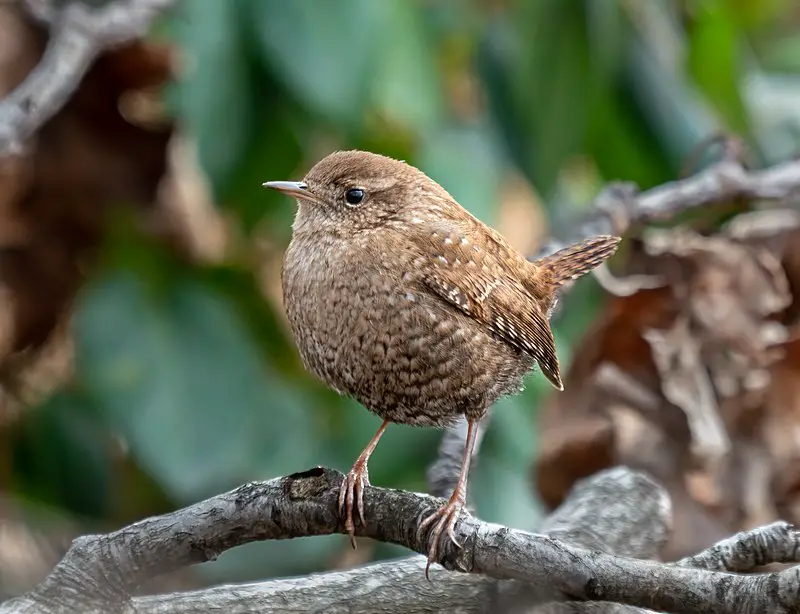
The Winter Wren is a tiny New World wren family bird. It can be found in North America, from British Columbia all the way to the Atlantic Ocean.
In winter, it migrates south and sometimes even reaches Central America. Its habitat consists mainly of coniferous forests where it builds its nest on or near ground level within dense vegetation for protection against predators.
This small songbird has a rich brown plumage with white eyebrows and buff underparts, which helps it blend into its environment perfectly.
The Winter Wrens are renowned for their loud songs that they sing daily and night during breeding season, making them an integral part of any forest ecosystem.
Scientific classification:
| Kingdom | Animalia |
| Phylum | Chordata |
| Class | Aves |
| Order | Passeriformes |
| Family | Troglodytidae |
| Genus | Troglodytes |
| Species | T. hiemalis |
Also Featured In: Wrens Species, Mountain Birds You Should Know
11. Golden-Crowned Kinglet
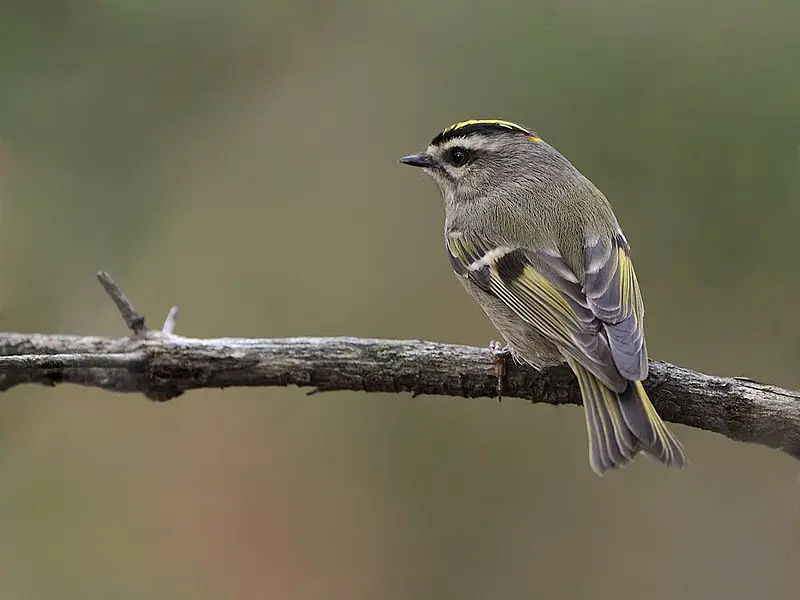
The Golden-crowned Kinglet is a small songbird native to North America. It has an olive-grey top and white underparts, with thin bills and short tails.
The most distinguishing feature of this bird is its yellow crown, surrounded by a black patch that extends through the eyes.
Males have an additional orange patch in the middle of their yellow crowns. They are active birds, often seen flitting from branch to branch as they search for insects or other food sources in trees or shrubs.
During winter, when less insect prey is available, Golden-crowned Kinglets will join mixed-species flocks searching for berries on bushes and trees throughout forests across North America.
Scientific classification:
| Kingdom | Animalia |
| Phylum | Chordata |
| Class | Aves |
| Order | Passeriformes |
| Family | Regulidae |
| Genus | Regulus |
| Species | R. satrapa |
Also Featured In: Birds that Live in Vancouver, Birds in Pacific Northwest
Conclusion
In the mountainous region of North Carolina, the rich diversity of bird species creates a captivating symphony of sights and sounds for bird enthusiasts.
From the vibrant plumage of the Eastern Bluebird to the majestic presence of the Red-tailed Hawk soaring above, these 11 mountain birds represent a mere fraction of the avian treasures that grace this picturesque landscape.
Whether you’re exploring the high elevations or the lush forests, the mountains of North Carolina offer a unique and rewarding experience for birdwatchers.
As seasons change, so do the inhabitants, making every visit an opportunity to discover the ever-changing beauty of these remarkable mountain birds.